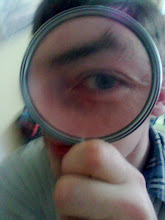- When you compose an image, do you think about frames as of a thing from comics or from films?
Both, but in an unfamiliar foreign language (which may not even exist) with no subtitles/translation, so that I could view/read/listen them with my own imaginations and logic to compose an entirely different visual language or take it as an abstract composition. In addition, I imagine a high speed bullet train passing through those images and I depict that image as abstract strokes and other elements, whooshing that train through different frames each time.
- Your works are full of details. How do you achieve so much precision?
I approach my works in two different ways.
1. Not approaching it at all, until inspiration takes me over. I will forever be grateful for these moments.
2. I carry an idea around for n number of days before I compose that image. My thoughts recapitulate that idea, exploring numerous styles and logics. This helps me to visualize a clear cut image even before I sit down to draw.
- Which form of expression do you prefer: asemic writing, computer art, drawings, or other? Or is everything poetry?
I like to view everything with the eye of poet. Everything else spread out from there. Some may think it’s ludicrous. We are not born with a user manual which directs us how to use our mind. We absorb actualities and details by seeing, hearing, and paying attention to our environs. Everything begins from there. We then decide how to process those thoughts and where to take those thoughts from there. If I don’t understand something, that shows lack of my knowledge in that area. I have a choice to remain ignorant or learn about it. Even then, sometimes we fail. Ten years ago or so, I have read somewhere about a scientist who dedicated his whole life studying about eels. But he remained unsure about the exact way eels migrate to Sea and reproduces. When somebody asked about his research, he recited a haiku about it instead.
Poetry shouldn’t be always in verses. It can take many forms especially if we try to see it with a different set of eyes. My preferred method of quick composition is always Asemic writing with ink on paper. I tried to explore on visual poetry using Asemic as a medium. But I like to work on all medium and interface. Last year I did a whole series (Minimal Asemic Visual Haiku) of work using a selfie App. If you give me a piece of paper, I will figure out a way to create a visual out of it. Creating shouldn’t be about the material we use.
- You use various kinds of iterations in your works. Do you repeat by creating the same thing from the beginning, or do you create variations of the first version? Or perhaps you have a different method?
If we analyze simple answers like yes or no under a microscope, we may suddenly realize that it act as a character from Roman Fleuves. Unlike language an image is a compacted form, but conveys several logics/views/readings from different perspectives. Sometimes I try to iterate an image to visualize each perspective. This may sound so automatic. Experimenting, even with poetry, is essentially automatic. But very exciting, because rePETition is different than repetITion.
- You often write titles or short comments about a form or concept of a work (for example "1 pm", "Two comic strip Senryu (human haiku) poems" or "Translating a poem"). How important are such comments and titles of your works?
My first preference is always titlelessness. Title is a closed see-through window, author is trying to impose something or guide reader/viewer/listener to somewhere even before they start to read/view/listen. Titlelessness is an open window, a bridge, silent abstract invitation, a blank canvas reader/viewer/listener could fill in later on. It can also be eye of the storm or calmness before Tsunami or a silent protest. Titlelessness is grain of sand on the shoreline. You may even find unnoticed autobiography of the ocean on that gain. Titlelessness lets you experience something on your own.
- Which form of presenting your works is your favorite? Exhibitions? Books? Chapbooks? Social media?
Being creative is my first priority. Everything else is relative. Being said that, my first choice of presenting my work is always on social media (I’m just a regular person; I do not have art agent, literary agent, publicist etc...). It’s also a platform where we can share our knowledge liberally with others. I also try to share my published poems form print media on one or more (depending on the friend-list) of my social media handle, because not everyone can buy and read printed periodicals. My second preference is book. When opportunities arise, I’m also open to other forms, including exhibitions, for presenting my works.
- How to promote innovative forms of art and literature?
Right now, through social media, a touch with our fingertip. We can always use various social media platform to find people with similar interests and could go forward from there.
https://www.instagram.com/dmayoora/
https://www.facebook.com/dmayoora/
https://www.facebook.com/CalligraphyStories/











Brak komentarzy:
Prześlij komentarz